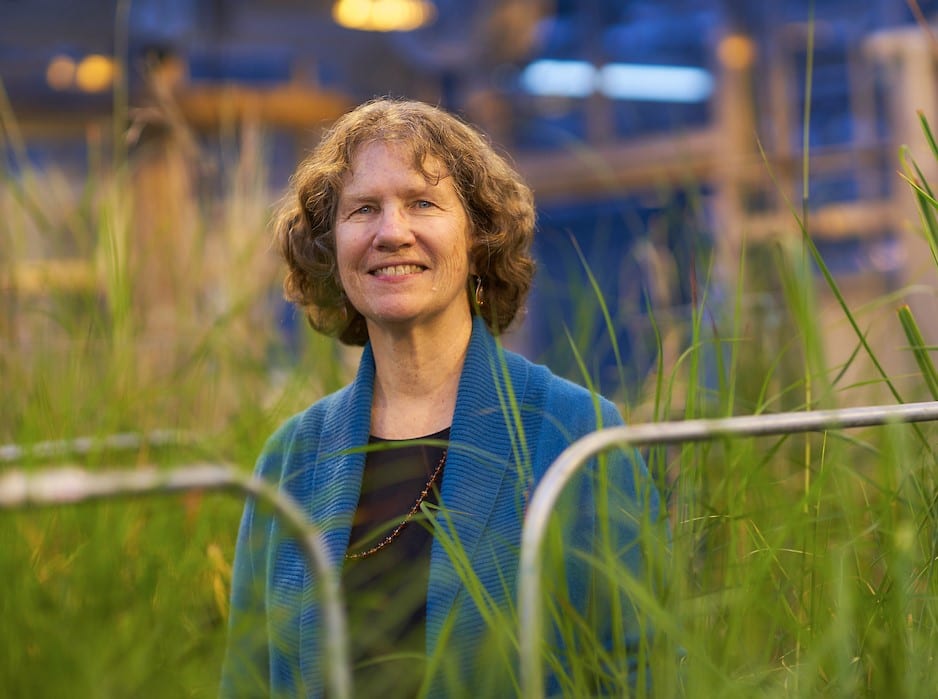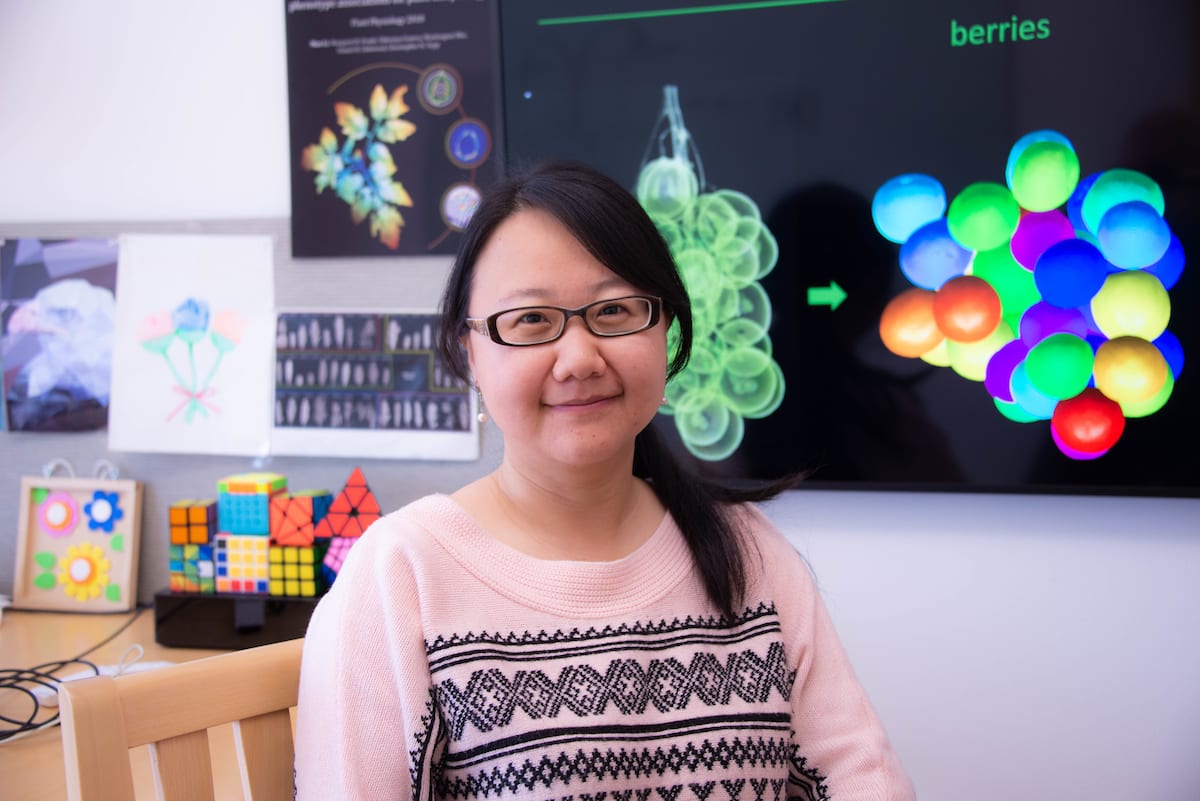Toni is currently investigating two aspects of natural products that are found in plants; how plants produce medicinal natural products at the enzyme and gene level, which could lead to new sources of medications for use against conditions such as dementia and cancer; and the use of plant natural products as components of biofuels.
Pathways to Plant Natural Products
Plants produce a vast array of specialized metabolites that communicate with other organisms, defend against pathogens and herbivores, attract symbionts and deter pests. However, the process of linking the chemical phenotype (chemotype) of an organism to the underlying genotype is arduous and slow. The conventional process begins with purifying chemical compounds from the plant, determining their structures, and using reverse genetics approaches to identify the relevant biosynthetic genes. In vivo and in vitro studies are required to study gene and pathway function in the host organism. Two obstacles exist to applying this workflow broadly. First, the chemical compound must be produced constitutively or at least under conventional laboratory conditions. Biosynthetic pathways that are induced only by particular biotic or abiotic stimuli are unapproachable. Second, the study organism must have a substantial set of genetic tools, most importantly a process for DNA transformation. Transformation and tissue culture techniques must be developed for each species, or methods must be developed in heterologous systems to link chemotype to genotype. Our research is aimed at understanding the formation of natural products in selected plants at the enzyme and gene levels by interrogating the transcriptome and genome for biosynthetic pathways.
Sequencing the Veratrum californicum genome— Computational identification and biochemical validation of the cyclopamine biosynthetic pathway
A grant was obtained from a pharmaceutical company to elucidate the biosynthetic pathway to the steroid alkaloid cyclopamine in Veratrum californicum. PellePharm obtained fast track FDA status for an analog of cyclopamine, IPI-926, to investigate efficacy in the topical treatment of skin cancer. Cyclopamine is currently obtained through wild collection of V. californicum rhizomes, which practice is not sustainable in the long term should the drug commercialize.
The availability of sequences of >70 plant genomes had led to the discovery that many natural product biosynthetic pathways are encoded in gene clusters. The clusters range in size from 35 kb to several hundred kb and contain 3–10 genes. Terpenoid biosynthetic genes are among the natural products most often found clustered in a plant genome. Closely related to the work proposed herein are the gene clusters that encode the pathways to steroid alkaloids in tomato, leading us to hypothesize that the biosynthetic pathway that leads to cylcopamine is clustered in the Veratrum californicum genome. We have previously isolated and characterized the first four genes in the cylcopamine biosynthetic pathway that convert cholesterol into the alkaloidal intermediate verazine. We will use these characterized genes to interrogate the V. californicum genome for the cyclopamine biosynthetic gene cluster. The genes that encode the pathway that converts verazine to cyclopamine will be biochemically validated. At the conclusion of the project, we will produce cyclopamine in Spodoptera frugiperda Sf9 cells.
Natural Product-Modifying Enzymes from the Plant Microbiome
We previously participated in two NIH-funded projects and in the 1000 Plant Transcriptome project (Leebens-Mack, J.H., Barker, M.S., Carpenter, E.J. et al. One thousand plant transcriptomes and the phylogenomics of green plants. Nature 574, 679-685 (2019)) aimed at sequencing and de novo assembly of medicinal plant transcriptomes and at developing a computational pipeline to interrogate omic datasets for medicinal natural product biosynthetic genes. The de novo assembly and bioinformatics interrogation technologies developed within those projects were applied to the following study of the opium poppy microbiome. The rationale of the preliminary studies was to test the hypothesis whether soil associated with a medicinal plant contains microorganisms that can metabolize medicinal plant natural products. Thebaine was chosen for these studies because is an important intermediate isolated from opium poppy used in the manufacture of opiate antagonists and agonists. The aims of the preliminary studies were to 1) isolate a soil microorganism associated with opium poppy that can grow on thebaine as the sole carbon source and 2) to determine whether methyl groups on the thebaine molecule can enter one-carbon metabolism of soil microbes. A soil microbe was thus isolated that could grow on thebaine as a sole carbon source. The microbe N-demethylated thebaine to northebaine, using the extracted methyl group as a carbon source for metabolism. The transcriptome of the microbe was sequenced, de novo assembled and interrogated for the gene that encodes the N-demethylating enzyme morphinan N-demethylase (MND). The results of this study appear in: Augustin, M.M., Augustin, J.M. and Kutchan, T.M. Enzyme morphinan N-demethylase for more sustainable opiate processing. Nat. Sustain. 2, 456-474 (2019).
Value-Added Co-Products in Energy Crops
Instability of fuels prices challenges the economic viability of plant-derived bioenergy and biofuels. Production of high-value co-products engineered into energy crops will mitigate the risk associated with growing these crops. Societal challenges, however, extend well beyond the need for renewable bioenergy and biofuels to the sustainable production of ca. 70,000 chemicals important to our standard of living, including our health and nutrition, which are currently synthesized from petroleum. Plant-based production of high-value and commodity chemicals is a new direction of the lab.
Camelina Engineering
We are developing a synthetic biology platform in an oilseed. Camelina sativa (camelina) is an emerging low-input nonfoodstuff Brassicaceae oilseed crop that grows on marginal land or can be used as a rotation crop on fallow land. Historically cultivated in Europe, it is now grown in northwestern regions of the United States and Canada and is considered a practical agronomic oilseed crop. Camelina is genetically similar to the model dicot Arabidopsis thaliana and is likewise genetically transformed by the facile floral dip method. Introduction of trait genes into camelina can be achieved with limited time and resource investment, making this plant an attractive engineering platform for novel seed composition. We propose that camelina oilseed can be engineered to produce and accumulate a vast array of natural products, including cyclic hydrocarbons and medicinals. We have produced camelina plants that accumulate mono- (limonene) and sesquiterpene (cadinene) cyclic hydrocarbons in seed. We have carried out multiple seasons of camelina field trials in Nebraska , Montana and Arizona with genetically modified plants that accumulate limonene, epi-aristolochene or cadinene in seed. In addition, we have engineered camelina to accumulate verazine (a cyclopamine biosynthetic precursor) in seed. The mono- and sesquiterpene accumulating plants are now being studied in the following diversity panel project.
Camelina Diversity Panel
One of the greatest challenges facing modern society is the development of renewable, sustainable and environmentally friendly alternatives to the fuels and chemicals that are derived from fossil oil. The seed oils of plants are chemically similar to the long-chain hydrocarbons of crude oil, and thus represent outstanding potential sources of fuel and industrial raw materials. A major challenge, however, is to produce these oils in non-food oilseed crops that have high yields and can grow under marginal and varied climatic conditions. In recent years, Camelina has received considerable attention as a non-food biofuel crop, but significant challenges remain to develop stable, high-yielding, geographically adapted germplasm that is suitable for biofuels production. Our research program, which includes partners from the USDA-ARS labs in Maricopa, AZ and Morris, MN, the University of Nebraska and the University of Florida will develop and utilize high-throughput phenotyping technologies, coupled with genomics-based approaches, to discover useful gene/alleles controlling seed yield and oil content and quality in camelina under water-limited conditions. A second major goal is to identify high-yielding cultivars that are suitable for production in different geographical regions.
This project is currently funded by the USDA/NIFA and has resulted in two publications thus far (Zinan Luo, Jordan Brock, John M Dyer, Toni M Kutchan, Megan Augustin, Daniel Paul Schachtman, Yufeng Ge, Noah Fahlgren, Hussein Abdel-Haleem. Genetic diversity and population structure of a Camelina sativa spring panel. Frontiers in Plant Science 10:184 (2019) and Augustin, J.M., Brock, J.R., Augustin, M.M., Wellinghof, R.L., Shipp, M., Higashi, Y., Kumssa, T.T., Cahoon, E.B., Kutchan, T.M. Field performance of terpene-producing Camelina sativa. Ind. Crop. Prod. Ind. Crop. Prod. 136, 50-58 (2019)).
Technologies available for license:
DDPSC0035-401-PC Methods for High Yield Production of Terpenes
DDPSC0057-501-US Constructs and Methods for Biosynthesis of Cyclopamine
DDPSC0078 Morphinan N-demethylase isolated from the methylobacterium thebainfresser and methods of use thereof.







